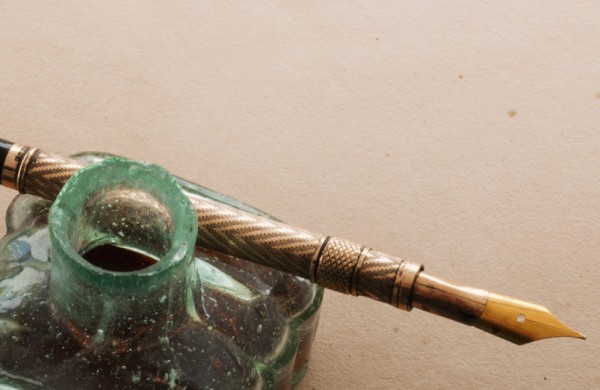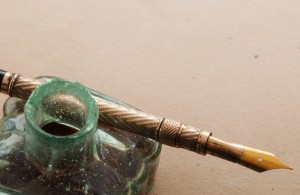-
Portrait of an Artist as a Middle-aged Man
by Margie Cook September 14, 2012

courtesy of Houghton Mifflin.
Manual of Painting and Calligraphy
José Saramago, translated by Giovanni Pontiero
Mariner Books, 2012Ardent followers of the late writer Jose Saramago, I’m sure have long noticed a gaping hole in their collections. Until recently his translated work available to his American readership — an oeuvre spanning decades — had yet to include his first novel ever written, first published in Portugal in 1977.
When first released in his native country, Manual of Painting and Calligraphy, did not provoke a following or garner much attention — The Gospel According to Jesus Christ, for instance, sparked a row with the Catholic Church and was censored by the Portuguese government. Manual remained largely unnoticed, unlike the next phase of his writing career, which was filled with prestigious literary prizes, the Nobel Prize in Literature among them.
According to the back flap, a copywriter would have you believe it’s a “brilliant juxtaposition of a passionate love story and the crisis of a nation.” Peripherally speaking, those things happen, but what it really is about is the artist’s existential progression. It’s not so much about love, but of enduring fame; it’s not a protest against a fascist regime, but a meditation on fate. Manual is not a manual in the literal sense, but closer in kin to a journal, written by a sardonic portrait painter under the pen name H.
Diary-like in its construction, it also shares components of other literary genres. H explores writing autobiography, along with mini-profiles of other artists, and by including a letter from a scorned lover, even tries his hand at some minor scrapbooking. Though formally trained, H is mistrustful of his ability to paint a lifelike portrait of his subjects. He muses, “[I turn] to writing without knowing its secrets,” paradoxically, in the hope to unveil those very secrets that separate technically skilled painters from actual artists. Manual is in fact, the anti-instructional guide — the titular irony underscored by H’s fervent autodidactic approach to writing.
His clients’ likeliness isn’t the only thing that’s revealed in his portraits. H claims, “anyone who paints portraits portrays himself.” Like strolling into a carnival tent of funhouse mirrors, each portrait renders a caricature of a fraudulent painter at a philosophical fork in the road — provoking his increasing desire to create a “truthful” portrait — one that is a faithful representation of the sitter and the painter. He likens the experience to “asking a psychoanalyst to take interest in a patient just a little bit further, which could lead him to the edge of the precipice and his inevitable downfall.” His plunge into the abyss is his nearest hope towards attaining the form of salvation he’s looking for — letting go of learned techniques and embracing unfiltered intuition.
Manual leaves Saramago more exposed than what is characteristic of the writer. Biographical elements are deeply embedded within its pages. His experience in Lisbon under Salazar’s dictatorship mirrors H’s own. Both men came of age, and grew well into it, while grappling with livelihoods in constant danger of being easily extinguished by a tyrannical government at the sign of any infraction. During particular heady meditations their voices appear to coalesce into one, and I wonder if we are actually glimpsing the pages of Saramago’s journal, when passages like the particular following lament:
If the straits of Tagus are located where I hoped to find India, will I be obliged to relinquish the name Vasco and call myself Ferdinand? Heaven forbid that I should die en route, as always happens to the man who fails to find what he is searching for in life. The man who took the wrong route and chose the wrong name +
Strangely, H’s emphasis on biography appears to be his prescribed antidote for these ill-fated men, the tragic victims of fate. Though crude, through sheer cleverness, he more or less achieves what he champions as a “freedom to be won” by filling reams of paper with a “written” portrait, he’s created a work guided by faith alone. In essence, he’s put on a blindfold, climbed a chair, and has fallen backwards trusting someone will catch him, which is the most honest piece of art he’s authored. If a painter portrays himself painting, it can also be said, anyone who writes, writes himself. He’s casted people from his life as characters within his narrative while he remains the unadulterated protagonist.
H has picked the lock and freed himself of his own limitations as an artist by writing the skeleton key. By relinquishing his christened name in favor of his initial H, he proves he is neither Vasco nor Ferdinand, philosophizing:
To give…a name is to capture him at a given moment in his earthly journey, to immobilize him, perhaps off-balance, to present him disfigured. A simple initial leaves him indeterminate, but determining him self in movement +
Names denote limitations and impose boundaries, and this, is a story about grown and rebirth.
H self assesses, “What do I want? First, not to be defeated. Then, if possible, to succeed.” This also appears to be Saramago’s ideal for Manual. It may lack tidiness, emphasized especially by H’s pedantic ramblings, (“Careful! What have I just written? Paint the saint. I know exactly what I am about to do, but could anyone reading these three words know it?…But what does it mean to pain the saint?” gives you an idea) but Manualneither ends in defeat for either man. By the last page H’s papers reveal a portrait of an artist whose reflection is crisply and clearly defined than any portrait painted.
As far as first novels go, it’s an endearing snapshot of the author, not as a young man, for he wasn’t young when he began writing professionally, but as a young writer — exhibiting exuberant energy in his prose, yet lacking matured restraint only experience can teach to pull back when necessary. However, it’s this vulnerability that results in Manual being a far more intimate read than some of his later work. If you’re an admirer of the late writer, Saramago slightly undone makes it worth the read.


